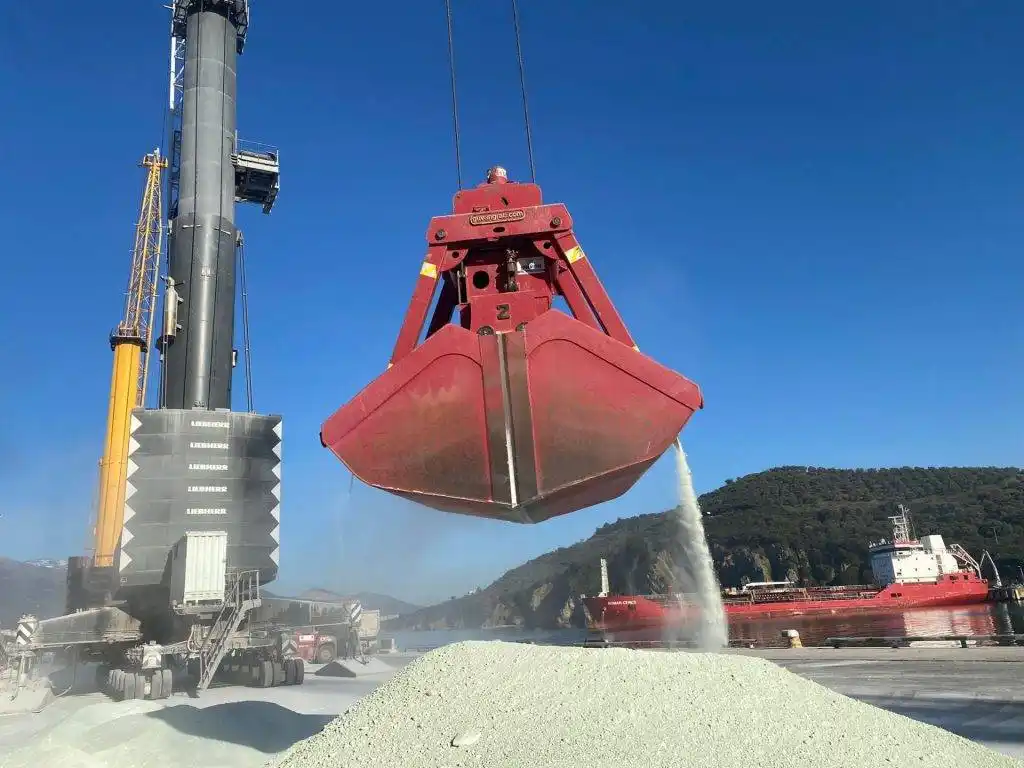
What is Cement-Clinker?
Cement Clinker or furnace slag is called dark gray grains with a diameter of 3-25 mm, which is produced by heating clay and limestone at a temperature of 1400-1500 degrees Celsius without any change in its properties. It can be stored in a dry place for a long time.
Cement factories buy clinker for cement production in areas where raw materials are scarce or not available. Cement is generally produced in two ways. In the wet method, cement-clinker, which is the raw material for cement production, is mixed with water and ground, but in the dry method, the cement raw materials are combined and ground in a dry form.
It is two similar materials. Cement is a powder form material used in the construction industry, while clinker is a material used to produce cement.
During the cement production process, clinker is created in the furnace, so that the raw materials that enter the furnace are heated, and when the temperature of the furnace increases and reaches its highest point, clinker is produced with a sudden decrease in temperature.
Cement-Clinker Types:
Types of clinker are different according to the type of cement that is produced.
Aside from the Portland cement blends, the types of cement clinker are as follows:
Sulfate Resistant Clinker
Low Heat Clinker
White Clinker
Low-alkali Clinker
Belite Calcium sulfo aluminate Ternesite (BCT)
Cement-Clinker Composition:
Clinker mineralogy is done with two methods of mineral analysis and chemical analysis. In mineral analysis, petrological microscope and X-ray diffraction are used, and in chemical analysis, X-ray fluorescence spectrometer is used. According to the analyzes performed on cement clinker, its components are divided into four categories:
Alite (tricalcium silicate)
Belite (dicalcium silicate)
Aluminate (tricalcium aluminate)
Ferrite ( tetracalcium aluminoferrite)
Clinker is combined with clay and additives and is used in the form of gray balls as a practical material in the production of cement. Various materials are used to create specific characteristics in manufactured cement.
Including gypsum, which is added to clinker and gives important properties to cement and increases its compressive strength. In addition, it prevents the accumulation and coating of powder on the surface of the wall of the mill.
Some organic materials such as triethanolamine are also added to the cement mixture to prevent the cement from becoming lumpy. However, additives such as ethyl glycol, oleic acid and dodecylbenzene sulfonate can also be added.
The most important cement produced by factories is Portland cement, but certain active compounds of chemical mixtures may be added to clinker to produce other types of cement such as pozzolanic cement, silica foam, etc.
SPECIFICATION OF OPC CLINKER ASTM C150
Chemical Composition:
| Silicon Dioxide | SiO2 | < 23.00 | Insoluble Residue | IR | < 0.50 |
| Aluminum Oxide | Al2O3 | < 6.00 | Free Lime | Free CaO | < 1.50 |
| Ferric Oxide | Fe2O3 | < 4.50 | Lime Saturation Factor | LSF | > 93.00 |
| Calcium Oxide | CaO | > 64.00 | Silica Module | SiM | > 2.20 |
| Magnesium Oxide | MgO | < 3.00 | Alumina Module | AlM | < 1.70 |
| Sulphur Trioxide | SO3 | < 2.00 | Tricalcium Silicate | C3S | > 60.00 |
| Loss on Ignition | LOI | < 1.00 | Dicalcium Silicate | C2S | < 22.00 |
| Sodium Oxide | Na2O | < 0.80 | Tricalcium Aluminate | C3A | < 10.00 |
| Potassium Oxide | K2O | < 0.90 | Tetracalcium Alumino Ferrite | C4AF | < 14.00 |
| Chloride | Cl | < 0.05 |
Physical and Reactivity:
Size Distribution: (%) 0.0-1.0mm | < 10.0 | Litric Weight | LW | < 1.40 |
| 1.0-5.0mm | < 20.0 | Moisture | < 0.50 | |
| 5.0-30.0mm | > 60.0 | *2 Days Reactivity @ Fineness of 8% at 45 mic. At 2.6 ± 0.2% SO3 Content, Mpa | > 20.0 | |
| 30.0-50.0mm | < 10.0 | *28 Days Reactivity @ Fineness of 8% at 45 mic. At 2.6 ± 0.2% SO3 Content, Mpa | > 44.0 | |
Cement clinker forms the core of modern cement manufacturing. It’s made by heating limestone and clay to around 1400-1500 °C, which creates nodules that are then ground and blended with a small amount of gypsum to produce hydraulic cement.
Bulk cement clinker supplies serve cement grinding plants, precast concrete manufacturers, large-scale infrastructure projects, and export markets with minimal processing facilities. Because clinker is a semi-finished product, buyers can tailor downstream grinding, additives or cement formulations to meet local specification needs.
Store clinker in a dry, well-ventilated covered yard or warehouse and protect it from moisture absorption or contamination. Since it carries the active silicate phases that drive cement strength, maintaining its integrity ensures the final cement mix performs as designed.